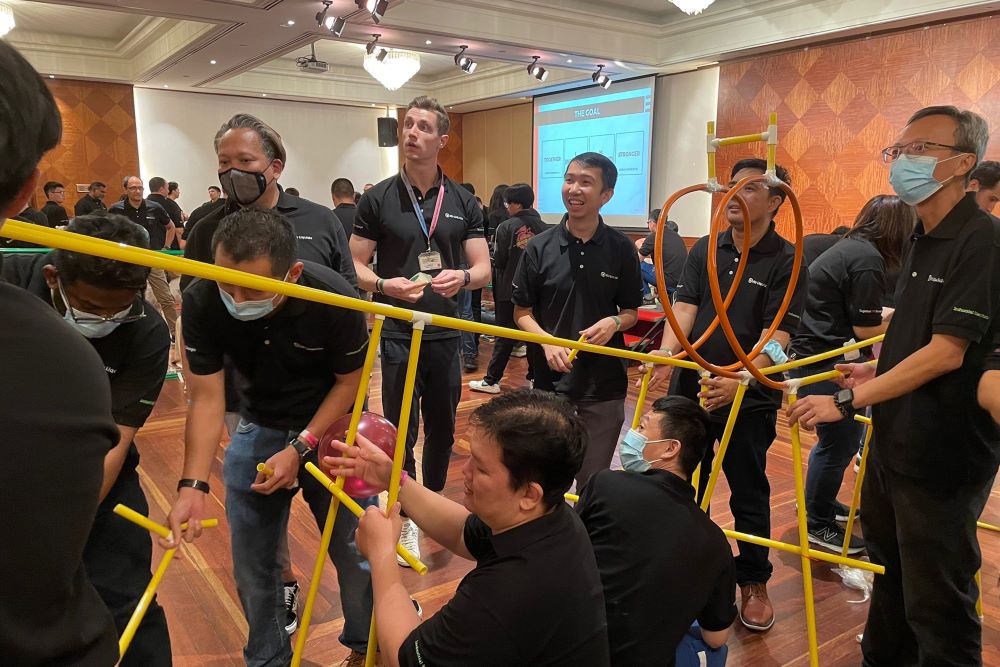Leveraging Team-Building Activities for Talent Development
In today’s dynamic business landscape, organizations are increasingly recognizing the value of team-building activities beyond their traditional role of fostering camaraderie and collaboration. When strategically integrated into talent development and leadership training programs, these activities can serve as powerful tools for enhancing employee skills, identifying potential leaders, and aligning individual goals with organizational objectives. This article explores how team-building events can be leveraged for talent development and offers practical suggestions for HR to seamlessly incorporate these activities into broader talent management strategies.
1. Team-Building as a Catalyst for Skill Enhancement
1.1 Developing Soft Skills
Team-building activities are excellent for honing essential soft skills such as communication, problem-solving, and conflict resolution. Activities that require participants to work together towards a common goal encourage individuals to practice active listening, articulate their ideas clearly, and negotiate effectively. For instance, a collaborative challenge that requires team members to plan and execute a project can provide valuable insights into each participant’s ability to contribute constructively and manage interpersonal dynamics.
1.2 Enhancing Critical Thinking and Decision-Making
Complex team-building exercises often involve scenarios that mimic real-world challenges, providing a platform for employees to showcase and develop their critical thinking and decision-making skills. Activities such as escape rooms or strategic games compel participants to analyze information, weigh alternatives, and make informed decisions under pressure. These experiences can be directly translated into improved performance in their professional roles.
2. Identifying and Cultivating Leadership Potential
2.1 Observing Leadership Qualities
Team-building events offer a unique opportunity to observe and assess leadership qualities in action. Activities that require delegation, strategic planning, and motivation of team members can highlight individuals with natural leadership tendencies. HR professionals can use these insights to identify potential leaders and tailor development programs that foster their growth.
2.2 Providing Leadership Experience
Allowing employees to take on leadership roles during team-building activities can provide them with valuable experience and build their confidence. For example, rotating the role of team leader or assigning individuals to lead specific segments of a challenge can help them develop essential leadership skills, such as decision-making, conflict resolution, and team motivation.
3. Aligning Team-Building with Organizational Goals
3.1 Setting Clear Objectives
To maximize the impact of team-building activities on talent development, it is crucial to set clear objectives that align with the organization’s broader goals. Define what skills or competencies you aim to enhance through these activities and ensure they are in line with your talent management strategy. For instance, if the goal is to improve project management skills, choose activities that simulate project planning and execution.
3.2 Integrating with Performance Metrics
Linking team-building outcomes to performance metrics can provide a measurable impact on talent development. Use feedback from these activities to evaluate individual and team performance against predefined criteria. This data can help HR professionals tailor future development initiatives and track progress over time.
4. Seamlessly Integrating Team-Building into Talent Management
4.1 Incorporating into Training Programs
Incorporate team-building activities into existing training programs to reinforce learning objectives. For example, combine workshops on leadership skills with team-building exercises that put those skills into practice. This approach ensures that employees not only learn theoretical concepts but also apply them in a practical context.
4.2 Creating a Continuous Development Cycle
Use team-building activities as part of a continuous development cycle rather than one-off events. Regularly scheduled activities can reinforce ongoing learning and development, keeping employees engaged and motivated. Consider integrating these activities into annual performance reviews, onboarding processes, and leadership development programs.
4.3 Encouraging Cross-Functional Collaboration
Design team-building activities that involve participants from different departments or functions. This approach fosters cross-functional collaboration and helps employees understand the broader organizational context. It also aids in breaking down silos and promoting a unified organizational culture.
5. Measuring and Evaluating Impact
5.1 Collecting Feedback
Gather feedback from participants after team-building activities to assess their effectiveness in achieving developmental goals. Surveys, interviews, and observation can provide valuable insights into how well the activities met their objectives and areas for improvement.
5.2 Analyzing Results
Analyze the feedback and performance data to measure the impact of team-building activities on talent development. Look for patterns and correlations that indicate improvements in skills, leadership qualities, and overall employee performance. Use these insights to refine future activities and enhance their alignment with organizational goals.
Conclusion
By strategically leveraging team-building activities as tools for talent development, organizations can enhance employee skills, identify and cultivate leadership potential, and align individual efforts with broader organizational objectives. HR professionals play a crucial role in integrating these activities into comprehensive talent management strategies, ensuring that they contribute effectively to both individual growth and organizational success.
To head back to read another article in our blog, click here.

